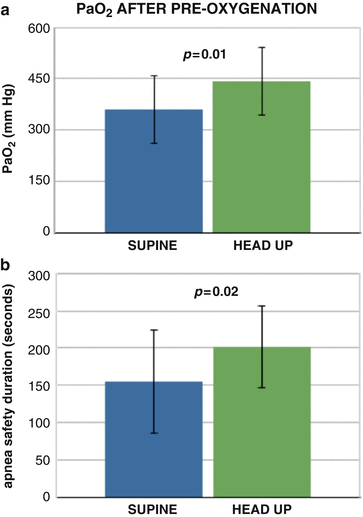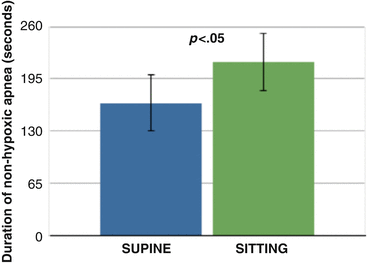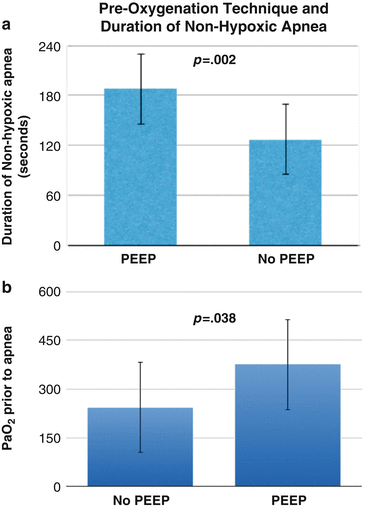(1)
Obesity Institute, Geisinger Medical Center, Southold, NY, USA
Abstract
The increasing popularity of surgical interventions for weight loss has been a major stimulus for major advances in anesthesia management of patients with extreme obesity. These advances have resulted in safer anesthetic management for patients with extreme obesity in all surgical specialties. Patients with extreme obesity present unique challenges for anesthesiologists in relation to enhanced pulmonary and airway risks, increased risks of postoperative hypoxemia and hypercarbia, glycemic control, and strategies for narcotic-sparing pain control. This chapter summarizes the important anesthesia developments and current challenges in the management of bariatric surgery patients. Best practice recommendations for bariatric surgery patients are reviewed as well as current important areas of needed study.
An important focus in the patient-centered preparation for bariatric surgery should involve close collaboration between anesthesiologists and bariatric surgeons in the evaluation of individual patients with possible anesthesia or airway risks and in the establishment of perioperative policies and procedures for management of specific high-risk conditions. Current best practice recommendations for anesthesia management in bariatric surgery are derived from evidence-based reviews of current literature and recommendations from experienced consultants [1, 2]. Many of the current guidelines for anesthetic management of patients with extreme obesity in other surgical specialty areas are derived from experience with bariatric surgery patients. Although there are currently no requirements for credentialing anesthesiologists in the management of bariatric surgery patients, current guidelines recommend that anesthesia departments identify an experienced skilled anesthesiologist to function as liaison and advisor between the anesthesia department and the bariatric surgery program. This designated anesthesiologist should be a regular participant in bariatric surgery morbidity and mortality reviews as well as quality improvement endeavors. An important aspect of this collaboration between bariatric programs and anesthesiologists should be to establish protocols for consultation and early preoperative evaluation of patients who may present special challenges for anesthesia.
Extreme Obesity and Lung Function
In patients with extreme obesity, abnormalities of lung function are common, especially in the awake supine position. The administration of general anesthesia worsens these derangements frequently resulting in hypoxia and hypercarbia. Extreme obesity is associated with reductions in functional residual capacity (FRC), expiratory reserve volume (ERV), and total lung capacity (TLC) caused by encroachment of abdominal contents on the diaphragm, reduced respiratory system compliance, and limited respiratory muscle capacity. As a consequence of reduced lung volumes, FRC may fall below closing volume causing airway closure, ventilation/perfusion mismatch, and hypoxemia during normal tidal breathing [3, 4].
General anesthesia compounds these abnormalities because it causes an additional fall in FRC which adds to the ventilation/perfusion mismatch and gas exchange abnormalities. The preoperative reductions in lung volume combined with the additional reduction caused by general anesthesia can result in major right-to-left shunting and hypoxemia [3]. Clinically significant reductions in lung volume are more prevalent in superobesity. Pulmonary function and gas exchange were studied in superobese subjects who were divided into two groups according to weight-to-height ratios [4]. The significant abnormalities in spirometry and gas exchange found in this study are summarized in Table 14.1 [4]. This study focusing only on superobese subjects highlights the clinically significant abnormalities of lung function and gas exchange, which may be hidden in larger surveys of pulmonary function in bariatric surgery candidates.
Table 14.1
A summary of pulmonary function and gas exchange findings in patients with superobesity
Weight/height 0.9–1 | Weight/height >1 | |
|---|---|---|
Number | 25 | 18 |
Mean weight (lbs), range | 349 (308–397) | 414 (347–500) |
VC (% predicted) | 74.7 ± 4.6 | 72.7 ± 6.5 |
FEV1 (% predicted) | 71.4 ± 4.5 | 68.7 ± 5.9 |
ERV (% predicted) | 23.8 ± 2.9 | 25.5 ± 6.5 |
FRC (% predicted) | 62.7 ± 3.4 | 70.9 ± 7.0 |
MVV (% predicted) | 67.9 ± 5.5 | 59.5 ± 5.7 |
TLC (% predicted) | 83.2 ± 4.1 | 81.8 ± 4.2 |
PaCO2 (mm Hg) | 46.7 ± 2.5 | 47.9 ± 2.5 |
PaO2 (mm Hg) | 69.1 ± 3.5 | 65.5 ± 2.8 |
Additional lung function abnormalities in extreme obesity with possible clinical significance include reduced lung and chest wall compliance and increased work of breathing, which, together with the impingement of the abdominal content on the diaphragms, result in rapid shallow breathing which is most marked in the supine position [3]. These abnormalities must be recognized in decisions regarding extubation after anesthesia or during weaning from mechanical ventilation in the intensive care unit. The reader is referred to Chapter 7 for additional information about pulmonary physiology in extreme obesity.
Anesthesia Preoperative Evaluation of Candidates for Bariatric Surgery
Obstructive sleep apnea (OSA) is an established surgical risk factor and also poses challenges for anesthesiologists. The condition is extremely common among candidates for bariatric surgery [5] such that evaluation for this condition is a necessary part of the comprehensive medical evaluation conducted by the bariatric program. The potential anesthesia risks of OSA are summarized in Table 14.2 [6].
• Significant risk of difficult intubation |
• High risk of recovery room complications |
• Sensitivity to opioids and sedative medications |
• Rare risk of sudden cardiorespiratory arrest |
A retrospective study compared 36 patients with sleep apnea and 77 matched controls and found that difficult intubation occurred in 22 % of patients with sleep apnea and 3 % of controls (p = .003) [7]. In a retrospective case-controlled study 101 joint replacement (knee and hip) patients with sleep apnea (only 33 using continuous positive airway pressure (CPAP) at home prior to surgery) were compared with 101 joint replacement matched controls. Adverse outcomes occurred at higher rates (p = .001), and hospital length of stay was prolonged (p < .007) in the patients with sleep apnea [8].
An evaluation for sleep apnea with review of results of any previous work-up should be carried out by the bariatric program, as well as close questioning in regard to any history of problems with airway or intubation is an important part of the anesthesia evaluation. Since the apnea–hypopnea index (AHI) appears to correlate with the extent of reduction in pulmonary function, those patients with more severe sleep apnea should be stabilized on CPAP prior to surgery in conjunction with advanced consultation with the anesthesia department. CPAP for 12 weeks has been shown to improve hypoxia, reduce systemic blood pressure, and reduce pulmonary artery pressures [9]. In another detailed study, 43 obese subjects (BMI 31.6 ± 5.4 kg/m2) with severe sleep apnea but no known pulmonary or cardiac disease underwent detailed cardiovascular studies before and after 6 months of CPAP treatment via nasal mask. Abnormalities of cardiac structure and function were identified and were associated with increasing AHI. Significant improvement in cardiac structure and function occurred with CPAP treatment (Table 14.3) [10].
Table 14.3
Improvement in parameters of cardiac structure and function in 43 obese patients with severe sleep apnea and no history of cardiac or pulmonary disease after 6 months of CPAP treatment
Baseline | After 6 months of CPAP | p | |
|---|---|---|---|
Heart rate (beats/min) | 73 ± 1 | 67 ± 10 | 0.02 |
Stroke volume (ml) | 64 ± 10 | 71 ± 11 | .0037 |
Systolic blood pressure (mmHg) | 159 ± 27 | 138 ± 28 | <0.03 |
Diastolic blood pressure (mmHg) | 92 ± 18 | 80 ± 20 | <0.03 |
Interventricular septum thickness (cm) | 1.32 ± .23 | 0.99 ± .21 | 0.001 |
Because of the proven physiological benefits of CPAP treatment for OSA, there is agreement among experts that CPAP treatment should be instituted before bariatric surgery in patients with extreme obesity and moderate-to-severe OSA [1, 2, 6]. However, there is limited evidence that preoperative treatment with CPAP may reduce the risks related to sleep apnea [11]. In addition, there is no information about the duration of preoperative CPAP needed to improve outcomes. This is an important area of needed study in bariatric surgery, because many candidates are found to have moderate or severe sleep apnea on preoperative evaluation and are denied preoperative treatment because of managed care denials or delays.
Anesthesia Induction and Airway Management
In anesthesia, the difficult airway refers to clinical situations where a conventionally trained anesthesiologist has difficulty in maintaining oxygenation with mask ventilation of the upper airway, difficulty with intubation of the trachea, or both [12, 13]. Because significant problems with the difficult airway are more common in extreme obesity [7, 14], strategies to increase the non-hypoxic apnea duration during induction and intubation are critical for patient safety. Because of the reduced lung volumes that are common in extreme obesity, the non-hypoxic duration is often limited, especially in the supine position. Current recommendations are to use the head-up position, either the “ramped” [15] or the reverse Trendelenburg position [16] for laryngoscopy and tracheal intubation. In a randomized controlled trial of preoxygenation position, 42 patients undergoing gastric band placement were randomized to two groups. Both cohorts received preoxygenation for 3 min with 100 % oxygen. The control group patients were preoxygenated in the supine position and the test group in the 25° head-up position. The preintubation oxygen tension was higher, and the desaturation safety period was longer in the head-up cohort (Fig. 14.1a, b) [16].


Fig. 14.1
(a, b) The results of a randomized trial comparing preoxygenation positions prior to endotracheal intubation in gastric band patients. The effect of position on PaO2 and on apnea safety duration after preoxygenation is demonstrated. Adapted from Dixon B, Dixon J, Carden J, Burn A, Schachter L, Playfair J et al. Preoxygenation is More Effective in the 25° Head-up Position Than the Supine Position in Severely Obese Patients; A Randomized Controlled Study. Anesthesiology 2005; 102:1110–1115 [16]
The use of the sitting position for preoxygenation with eight deep breaths over 60 s and an oxygen flow of 10 L/min has also been shown to significantly prolong the safe tolerance to apnea (Fig. 14.2) [17]. Another technique for prolongation of the non-hypoxic apnea period is the use of positive end-expiratory pressure (PEEP) during preoxygenation. In a randomized trial, the use of CPAP at 10 cm with 100 % oxygen for 5 min followed by pressure-controlled mechanical ventilation with PEEP for another 5 min before tracheal intubation was compared with a control group who received 100 % atmospheric oxygen and similar preintubation mechanical ventilation. The use of PEEP increased both the non-hypoxic apnea duration and the PaO2 prior to apnea (Fig. 14.3a, b) [18]. In a case report involving a critically ill patient with morbid obesity and obesity hypoventilation who needed emergency cholecystectomy, noninvasive bi-level positive airway pressure was used for preoxygenation with dramatic improvement in serial arterial blood gases [19].



Fig. 14.2
The beneficial effect of the sitting position for preoxygenation on the duration of non-hypoxic apnea in obese patients prior to endotracheal intubation. Adapted from Altermatt F, Munoz H, Delfino H, Cortinez L. Pre-oxygenation in the Obese Patient: Effects of Position on Tolerance to Apnea. Brit J Anesth. 2005; 95:706–709 [17]

Fig. 14.3
(a, b): The beneficial effect of the use of PEEP during preoxygenation on non-hypoxic apnea duration and PaO2 prior to apnea. Modified from Gander S, Frascarolo P, Suter M, Spahn D, Magnusson L. Positive End-Expiratory Pressure During Induction of General Anesthesia Increases Duration of Nonhypoxic Apnea in Morbidly Obese Patients. Anesth Analg. 2005; 100:580–584 [18]
The use of PEEP during induction of anesthesia has been studied in nonobese adults and has been shown to reduce atelectasis [20]. Similarly, PEEP which is optimized using electric impedance tomography has been used in laparoscopic gastric bypass patients (N = 15), with maintenance of normal FRC and improved oxygenation. In this small study of patients with BMI 49 ± 8 kg/m2, the optimal level of PEEP was 15 ± 1 cm H2O, and volume loading was utilized to maintain cardiac index [21]. The use of alveolar recruitment strategies using increases in end-expiratory pressure with volume loading when necessary merits further study in bariatric surgery, especially among the superobese where the reductions in lung volumes tend to be clinically significant. Increased use of alveolar recruitment may impact favorably on perioperative tissue hypoxia, which is common in obesity [22].
Another challenge for anesthesiologists when managing patients with extreme obesity is difficulty with mask ventilation defined as the inability of an unassisted anesthesiologist to maintain the measured oxygen saturation by pulse oximetry >92 % or to prevent or reverse inadequate ventilation during positive pressure mask ventilation under general anesthesia [13, 23]. In a prospective study of 1,502 patients, difficult mask ventilation was encountered in 5 %. Univariate and subsequent multivariate analysis of patient risk factors revealed five risk factors: age >55 years, body mass index >26 kg/m2, lack of teeth, presence of a beard, and history of snoring [23]. The combination of morbid obesity with another risk factor invites a significant risk and merits advanced preparation by the anesthesiologist [12].
Management of Hypoxemia and Hypoventilation
The prompt recognition and treatment of hypoxemia and hypoventilation complicating bariatric surgery remain a major challenge for anesthesiologists and bariatric surgeons. The overall incidence of respiratory failure complicating noncardiac surgery was found in a Veterans Affairs National Surgical Quality Improvement Program (NSQIP) prospective cohort study of 81,729 to be 3.4 % [24]. Another prospective study of 1,332 patients from the general population who underwent elective abdominal surgery identified 17 % of patients with PaO2/FiO2 < 300 spontaneously breathing 30 % oxygen 1 h after extubation [25]. The exact incidence of clinically significant hypoxia or hypoventilation after bariatric surgery has not been well studied. A small study designed to identify the incidence of hypoventilation after bariatric surgery involved sequential blood gas sampling and continuous pulse oximetry in 16 postoperative bariatric surgery patients. The study demonstrated a high incidence of worrisome hypoxemia that was not clinically detected (Table 14.4) [26] and one case of life-threatening hypercarbia, which was not detected by clinical providers [27].
Table 14.4
Postoperatiove hypoxemia after bariatric surgery: the results of a small study demonstrating a high incidence of significant hypoxemia in the first 24 hours after bariatric surgery
• N = 15 |
|---|
• Body mass index (BMI): 48.2 ± 2 kg/m2 |
• Age: 44 ± 4 years |
Continuous pulse oximetry monitoring: |
• Every patient had more than one episode of SpO2 <90 % for more than 30 s in the first 24 h after surgery |
• Average nadir SpO2: 75 ± 8 % |
• Average longest desaturation <90 %: 21 ± 15 min |
• All episodes undetected clinically |
Hypoxia that complicates general anesthesia is caused either by regional hypoventilation resulting in ventilation/perfusion mismatch and hypoxemia or by global hypoventilation. The use of opiates suppresses arousal and can complicate either condition. The current post-anesthesia care practice of routinely administering high flows of supplemental oxygen to postoperative patients in order to prevent desaturation impairs the ability to detect hypoventilation with pulse oximetry [28




Stay updated, free articles. Join our Telegram channel

Full access? Get Clinical Tree








